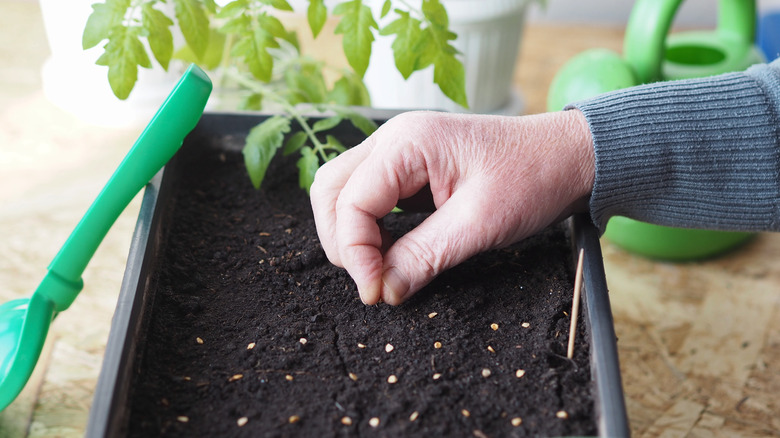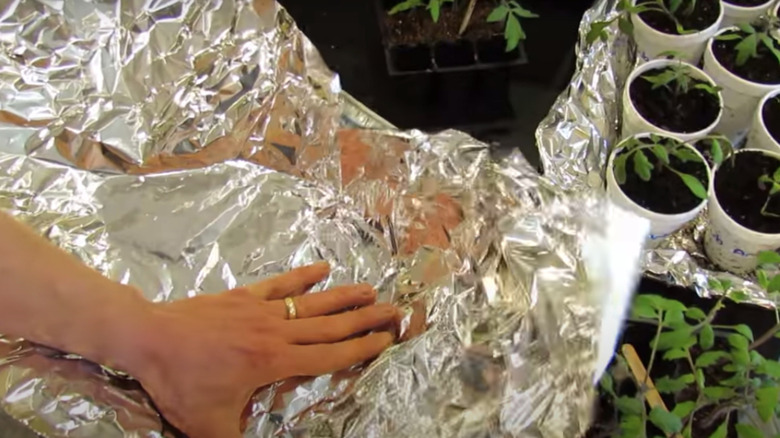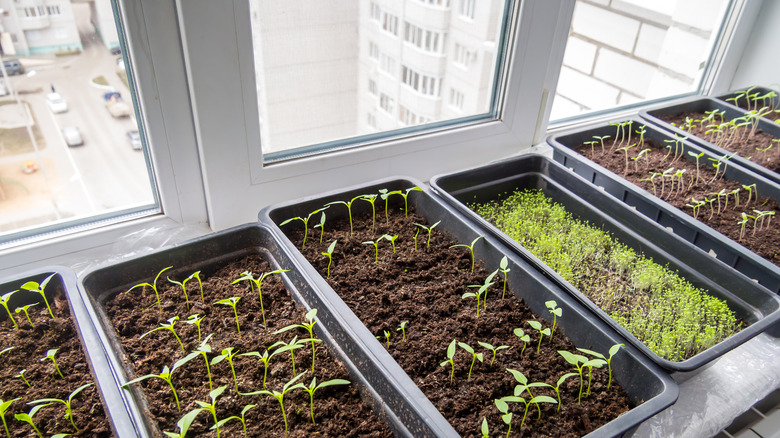Aluminum Foil Is The Secret Weapon You Need When Starting Seeds
If you've got a bit of a green thumb and want to try growing some seeds indoors, you might just love this clever little gardening hack. We're going to show you how to build a "seed incubator" by lining a shoe box with something you're sure to have in your kitchen cupboard — aluminum foil!
As a beginner gardener, it's easy to come up against challenges when sowing seeds. Perhaps you have already had some experience with seeds failing to germinate and wonder what you did wrong. A classic mistake is not taking care to keep your seeds warm because you've heard they don't need direct sunlight to grow. While it's true that some seeds don't need sun initially, the one thing all seeds do need is a consistently warm and friendly environment to grow in. Any extreme temperatures or fluctuations may interrupt or stunt the growing process.
Warmth may be something you have less control over though, especially if you live in a cooler climate or a house that isn't easily warmed up by the sun. If this sounds like you, this hack is the perfect way to solve your problem. Plus, it's a budget-friendly method and can be cheaply replicated to germinate as many seeds as you need.
How to make a 'seed incubator' using aluminium foil
If you're curious and can't wait to try out this fun indoor gardening hack to help your seeds germinate successfully with no disappointments, all you will need are seeds that are suitable for planting indoors, a simple shoebox or another cardboard container with plenty of space to spread your seeds out in, a roll of aluminum kitchen foil, and a sharp tool for poking holes. That really is it!
First of all, you'll want to line your shoebox or container. To do this, make sure your foil is shiny side up and cover the inside of the container leaving about 2 inches excess to fold over the sides. Next, get your sharp tool (a screwdriver or knitting needle would work well) and poke several drainage holes through the base, going through both the foil and the box (this is why you'll need a cardboard container over a plastic one).
Now that the foil is in place, you can fill the box about halfway with soil, an average potting mix will do, and plant your seeds by pushing them in and sprinkling over a thin layer of soil to cover — small seeds require more shallow planting. Finally, place the container somewhere safe in your home, and if you're putting it on a windowsill that gets lots of direct sunlight, don't forget to keep watering little and often so the soil doesn't dry out.
Why seeds need warmth for successful germination
If you're wondering exactly how this works, the foil inside the box helps to reflect heat back onto the soil in a similar way to foil insulation used to keep houses warm, directing heat inwards rather than letting it escape, helping to keep the seeds warm and aid their germination. As a bonus, the foil outside the box acts to reflect light back onto the young sprouts as they emerge through the soil. Warmth is one of the three main things seeds need to germinate, along with water and oxygen, and sunlight feeds the plant as it grows above the soil. Warmth is needed for the enzymes to perform respiration and cell division. When the seeds start to sprout, they will require around 14 to 16 hours of sunlight daily so the little leaves can begin photosynthesis.
You can use grow lights if you like, but be careful not to leave them running for 24 hours, as seedlings use the dark nights to rest because growing is hard work! The light reflected from the foil during the day should be enough. An alternative method to retain warmth is to place your box away from open windows, doors, or vents that will provide a draft that could cool the soil down. Warming mats are also available as a more conventional method of helping seeds to germinate.


